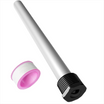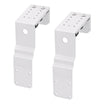Cleaning and Upgrading Your RV Air Conditioners in Easy Steps
Having a well-functioning RV air conditioner is essential for a comfortable and enjoyable RV experience, especially during hot summer days. However, as with any appliance, RV air conditioner require maintenance, cleaning, and sometimes upgrading to ensure optimal performance.
Steps To Cleaning RV Air Conditioners
Proper maintenance and regular cleaning are essential for optimizing the performance and extending the lifespan of your RV air conditioner. This guide provides step-by-step instructions to help you effectively clean your RV air conditioners, ensuring that it operates efficiently and keeps you cool during your adventures on the road.
Step 1: Disconnect the Unit from the Electricity Supply
Safety should always be a priority when working with electrical appliances. Before starting the cleaning process, ensure that the RV air conditioner is completely disconnected from the power source. This precautionary measure minimizes the risk of electric shock.
Step 2: Vacuum the Compressor
Begin by using a vacuum cleaner with a brush attachment to remove any accumulated debris or dirt from the compressor. Pay special attention to the fins and other hard-to-reach areas. Removing this debris helps maintain proper airflow and prevents potential damage to the compressor.
Step 3: Clean the Condenser Coils
The condenser coils, located on the exterior of the RV air conditioner, are prone to dirt buildup. Start by spraying a coil cleaner onto the coils, following the manufacturer's instructions. Allow the cleaner to sit for the recommended duration, which usually ranges from 5 to 15 minutes. This solution effectively dissolves dirt, dust, and grime. Afterward, rinse the coils thoroughly with water, ensuring all the cleaner residue is removed. Allow the coils to dry completely before proceeding.
Step 4: Remove the Exterior Cover
To access the internal components, remove the exterior cover of the RV air conditioner. This cover is usually held in place by screws or clips. Carefully detach it and set it aside.
Step 5: Clean the Exterior Cover
Take the time to clean the exterior cover using a soft cloth or brush. Remove any dirt, dust, or debris that may have accumulated on the surface. This step helps maintain the aesthetics of the RV air conditioner and prevents the buildup of grime over time.
Step 6: Clean the Refrigerant Lines
Inspect the refrigerant lines for any signs of damage, such as cracks or leaks. If any issues are identified, consult a professional for repair. Additionally, wipe down the lines with a clean cloth to remove any dirt or dust, ensuring optimal performance.
Step 7: Clean the Interior Components
The interior components of the RV air conditioner require regular cleaning to maintain efficiency. Using a soft brush or cloth, gently clean the evaporator, drain pan, and blower motor. Remove any accumulated dirt, dust, or debris from these areas. This step promotes proper airflow and prevents the growth of mold or bacteria.

Steps For Upgrading An RV Air Conditioner
Upgrading your RV air conditioner can significantly enhance the cooling performance and comfort of your recreational vehicle. This guide provides a step-by-step approach to help you successfully upgrade your RV air conditioner. By following these steps, you can select the right model that fits your requirements, ensure compatibility with your RV, and enjoy improved cooling efficiency during your travels.
Step 1: Research Available Models
Start by conducting thorough research on various models and brands of RV air conditioners. Look for features, specifications, and customer reviews to understand the options available in the market. Consider factors such as energy efficiency, cooling capacity, reliability, and warranty to make an informed decision.
Step 2: Check the Size of the RV Air Conditioner
When upgrading your RV air conditioner, it is crucial to choose a unit that matches the cooling requirements of your vehicle. Refer to your RV's documentation or consult the manufacturer to determine the appropriate cooling capacity measured in BTUs (British Thermal Units). Select an air conditioner with a similar or higher BTU rating to ensure optimal cooling performance.
Step 3: Ensure the RV Air Conditioner Is Suitable for the RV
Check the compatibility of the new air conditioner with your RV's electrical system and installation requirements. Ensure that the voltage, amperage, and wiring configuration of the upgraded unit align with your RV's electrical setup. Consider any specific installation guidelines provided by the manufacturer to guarantee a smooth and successful upgrade.
Step 4: Consider the Wattage and Power Requirements
Before finalizing your decision, evaluate the wattage and power requirements of the new air conditioner. Compare these specifications with your RV's electrical system's capacity to ensure they are compatible. Avoid overloading your RV's electrical circuits by selecting an air conditioner that operates within the limits of your RV's power supply.
Step 5: Consider the Weight and Noise Levels
Another important aspect to consider is the weight and noise level of the upgraded air conditioner. Ensure that the weight of the unit does not exceed your RV's weight capacity or disturb the vehicle's balance. Additionally, select an air conditioner that operates quietly to minimize noise disturbances during your travels and provide a peaceful environment inside the RV.
Frequently Asked Questions
How often should I change the air filter in my RV air conditioner?
It is recommended to check and clean or replace the air filter in your RV air conditioner every 1-2 months. However, the frequency may vary depending on factors such as usage, air quality, and camping environment. If you frequently camp in dusty areas or experience high pollen levels, it may be necessary to clean or replace the air filter more frequently.
Can I install a larger air conditioner in my RV for better cooling?
It is important to consult with a professional or refer to the manufacturer's guidelines before considering upgrading to a larger air conditioner. Modifying the RV's electrical system and cooling capacity should be done carefully to avoid any issues.
What is the average lifespan of an RV air conditioner?
The average lifespan of an RV air conditioner can range from 10 to 15 years with regular maintenance and care. Proper maintenance includes regular cleaning, checking for any leaks or malfunctions, and ensuring the unit is protected from extreme weather conditions.
Is it normal for an RV air conditioner to produce water or condensation?
Yes, it is normal for an RV air conditioner to produce condensation. As warm air passes over the evaporator coils, moisture in the air condenses and collects on the coils. This condensation is typically drained through a condensate line or pan and expelled outside the RV.
Can I use my RV air conditioner while boondocking or dry camping?
Using an RV air conditioner while boondocking or dry camping without a power source can be challenging. It typically requires a generator or alternative power system like solar panels and an adequate battery bank.
Fogatti RV air conditioner can significantly improve its performance and extend its lifespan with regular cleaning and upgrading. Follow the steps outlined above to clean and upgrade your RV air conditioner for optimal performance and a comfortable RV experience. Remember to prioritize safety when cleaning or upgrading your RV air conditioner by disconnecting the unit from the electricity supply before starting.



























